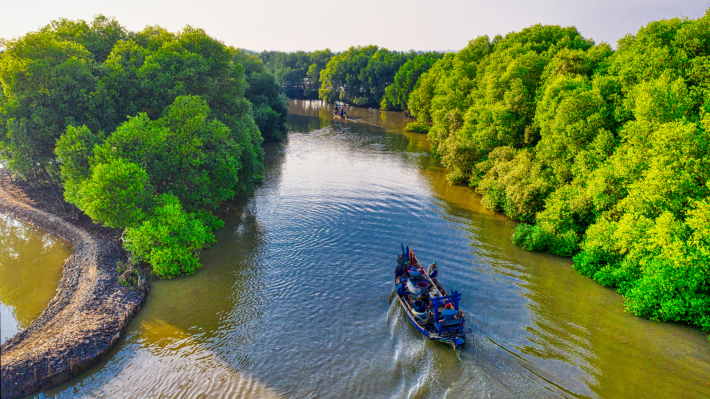Centering justice in Nature-based Solutions projects
A new People and Nature paper explores the vital need for Nature-based Solutions projects to consider justice for those living alongside them.

Globally, conservation projects to expand carbon sinks are seen as vital in the fight against climate change. However, as these ‘Nature-based Solutions’ (NbS) projects expand, understanding how to achieve justice in their outcomes is crucial for both people and the environment.
A new People and Nature paper by an international interdisciplinary team, working with Edinburgh Napier University, explores this issue by comparing and contrasting how local participants, beneficiaries, stakeholders and governing documents frame and conceptualise justice. Researchers used the first mangrove-based ‘blue carbon’ project – Mikoko Pamoja as the focus of their study.
The authors discovered that community participants do take pride in these projects, but there is often a mismatch between the different parties involved (scientists, financial backers, practitioners and local residents) about what it means to be ‘just’. This is due to the idea of justice being shaped by different experiences, history and cultures. The social status of the groups involved also plays a part in determining their definition of justice.

The paper’s findings say that NbS project success depends on the consent and active participation of people living in the project area. It’s important for those designing or studying NbS interventions to understand that beginning work with an idea of justice that does not match that of the community their work takes place in, can cause negative outcomes for the project in a variety of ways.
For example, applying a ‘one size fits all’ notion of justice can create blind spots to vulnerabilities experienced by different groups of people. Well-meaning projects can also impose governance structures that seem democratic and equitable to outsiders, but lack support locally.
Lead author Mark Huxham explains “Our findings support the idea that Nature-based Solutions are best underpinned by ethical justice. This relies on understanding local perspectives and listening to local people.”
The understanding of justice in projects such as the blue carbon projects in Kenya is even more important in the context of the history of conservation. Historically interventions have displaced, misrecognised, denied agency and voice, and otherwise harmed indigenous communities in the Global South.
The authors of the paper make clear that despite the rise in community-based management and attempts to bring justice more fully into conservation projects, a fierce debate persists between those who continue to emphasise protection and ignore justice, and those who think justice should be the foremost value guiding conservation interventions today.
Article based off of a Institute of Development Studies (IDS) press release.
Read more here:
, , , , , , & (2023). Rawls in the mangrove: Perceptions of justice in nature-based solutions projects. People and Nature, 00, 1– 15. https://doi.org/10.1002/pan3.10498
Like what we stand for?
Support our mission and help develop the next generation of ecologists by donating to the British Ecological Society.